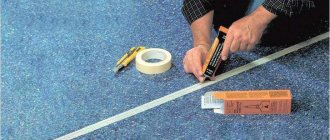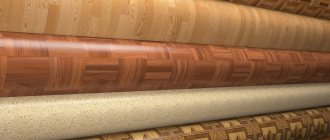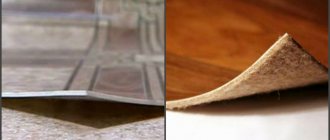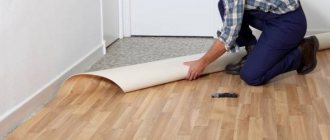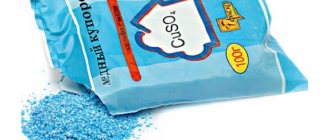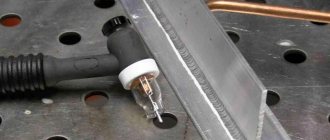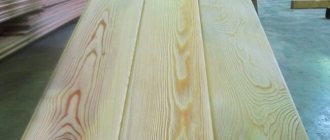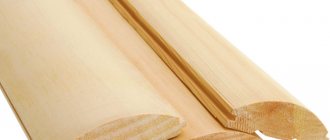One of the most practical, durable and high-quality floor coverings, despite the emergence of a colossal number of new products, has been and remains ordinary linoleum. This material is not afraid of moisture or abrasion, is easy to clean and simple to install, for which it is valued by both professional craftsmen and ordinary residents and apartment owners. But during the installation of this coating, situations often arise when two separate pieces of material need to be fastened together. And for this you need to know how to solder linoleum at home.
How to solder linoleum at home
Assortment and types of linoleum
Linoleum is one of the materials for finishing floors, which is sold in the form of rolls of different (up to 5 m) widths and lengths. It is made from a variety of materials - it can be natural, glyphthalic, rubber or made of polyvinyl chloride. Usually you can find the latter coating option on sale, as it has good performance and an affordable price.
Linoleum structure
This type of coating can be either single-layer or multi-layer. The latter option is often created using fiberglass, which makes the coating as durable as possible.
On a note! There is linoleum, which is made on the basis of mineral dyes and natural resins, as well as oils and wood flour. Its price is perhaps the highest among other types of this coating. But such linoleum is a 100% environmentally friendly material, which is also highly durable.
Natural linoleum
Linoleum can be produced on a foam base, insulated or without a base at all. The latter option is only about 2 mm thick. The foam material is quite thick, up to 4 mm thick and multi-layered. Insulated linoleum usually has two layers, the top one is a thin layer of PVC, and the bottom one is felt or jute covering. This is the thickest version of linoleum, which has a thickness of more than 5 mm.
Also, based on thickness and quality, all types of this material can be divided into three categories:
- B – household (PVC layer thickness up to 0.3 mm);
- K – industrial or commercial (thickness up to 0.5 mm);
- P – semi-commercial (PVC layer – from 0.6 mm).
About the varieties of linoleum
If you use the European type classification EN685, the material is usually marked with two numbers, the first of which demonstrates the purpose of the room, and the second - the possible permissible load. Thus, three types of premises can be distinguished:
- 1 – residential;
- 2 – office;
- 3 – production.
Linoleum can be further divided according to possible loads experienced:
- 1 – material intended for rooms with little load on the floor;
- 2 – coating for floors that experience moderate load intensity;
- 3 – linoleum, which will withstand a fairly high load;
- 4 – coating that can be used for rooms with the most intense load.
Despite the fact that linoleum appears to be a monolithic material, it has several layers. And the thicker the outer protective layer of coating, the longer the linoleum will last without replacement. Even for apartments, it is not recommended to buy a coating less than 3 mm thick, since it wears out quite quickly.
Laying linoleum
Advice! It is important to choose linoleum for finishing indoor floors so that it matches the interior in shades, but at the same time meets the operational requirements of the room - it is quite environmentally friendly, durable and warm.
Prices for Tarkett linoleum
linoleum tarkett
Features of the edge joining process
When installing linoleum, quite often (especially in spacious rooms) it becomes necessary to connect two separate sheets of it. If such a seam is left as is or secured with small nails, it will still be very noticeable and over time, when moving along it, it will cling to everything. Thus, the edge will be sloppy and unsightly, and over time it will simply tear and lose its neat appearance.
On a note! Also, over time, due to shrinkage, the edges of such a joint, which is not secured by anything, will simply separate, and an unsightly gap will appear on the floor, under which all kinds of debris will fall.
Linoleum joints
The connection of individual strips of linoleum is carried out using welding, which can be either cold or hot. And the choice of docking option will depend on:
- material class;
- its qualities;
- purpose of the premises;
- sizes of joined parts;
- linoleum thickness;
- length of the joining seam;
- the presence of any decorative inserts or figures.
The basic requirements for the seam must be as follows: it must be not only durable, but also hermetically sealed and able to withstand all possible loads in a particular room . Also, the seam should be as invisible as possible to the naked eye.
It is important that the joints of the linoleum sheets are invisible
Bonding methods
There are several ways to connect individual pieces of linoleum together, each of which has its own advantages and disadvantages. For example, the simplest option is to glue the joints with double-sided tape. In this case, a piece of tape of the required length is glued to the floor under the material, the second protective tape is removed from it (the tape), and the linoleum itself is fixed to the adhesive side that is revealed as a result. In this case, you should not expect high quality work, since the tape will not hold two pieces of coating very well - a gap will soon form between them, into which debris will begin to fall over time, and the joint will look ugly.
Threshold for linoleum
It is best to use the cold or hot welding method for gluing linoleum. The first method is usually used at home, the second is more often used when finishing industrial premises or in fairly large and spacious rooms.
Cold welding of linoleum
The gluing of individual panels is done using a special solvent adhesive. It contains substances that seem to melt linoleum. After this mass hardens, the two sections of the coating become one.
Cold welding of linoleum
The method is convenient for use by novice craftsmen and at home, as it does not require the acquisition of special equipment or special skills. Suitable for gluing household linoleum. This is an opportunity to connect two pieces of linoleum or repair it without any special material and time costs - the process happens quite quickly, but at the same time a well-prepared seam will be barely noticeable to the eye.
Cold welding of linoleum with glue - stages
Table. Adhesives used for cold welding.
| Titles | Characteristic |
| A | This option is suitable for connecting fresh joints when laying new linoleum. The glue is quite liquid and quickly melts the surface. To avoid damaging the rest of the coating, the joint is sealed with masking tape. Otherwise, if the glue gets on the surface of the linoleum, it will melt and ruin it. The glue is applied using a needle on the cap directly into the seam. For all processes (melting and gluing linoleum) only 15-30 minutes are enough. |
| WITH | Glue with almost the same characteristics, but thicker. It is most often used for repairing materials and during re-laying of old coverings to join individual elements. In this case, you don’t need to use adhesive tape, since the glue will not spread due to its consistency. |
| T | This type of glue is rarely used, especially by beginners. However, experienced builders may prefer it. The composition is used to connect pieces of multi-component linoleum. Made from polyvinyl chloride and polyester. The joint is strong and elastic. |
Thanks to the cold welding method, the gluing process occurs quickly. You don’t need to buy special equipment, just buy a tube of the desired type of glue. After work, the connection of two pieces of material will be reliable and durable - sufficient for a household coating.
Cold welding adhesive
Hot welding
In this case, special equipment is used for the work - a special soldering iron, which is quite expensive. It is capable of heating linoleum to critically high temperatures (up to 400 degrees). But the method is applicable only for commercial-type coatings, since other types of materials simply will not withstand high temperatures and will be irretrievably destroyed.
Hot welding of linoleum
Also, for work you will have to purchase additional material - a special polyvinyl chloride cord, which during operation fills the groove formed between two sections of the coating.
Hot Welding Tools
Cord for hot welding of linoleum
The completion of the work will be the removal of the protruding part of the polyvinyl chloride cord from the joint surface. It can be cut or sanded.
Hot welding of linoleum allows you to get an almost invisible seam
Sometimes the hot welding method is implemented using a conventional soldering iron. But in this case, the joint between the canvases is unlikely to turn out beautiful. The method makes sense to use only in small areas.
Sometimes a regular soldering iron is used
Methods for joining linoleum
You can connect individual linoleum sheets using three welding methods. This is cold and hot welding, as well as joining materials using a conventional electric soldering iron. The latter is usually used only for connecting household-type linoleums. Let's take a closer look at all these types of welding.
Hot welding of linoleum
This option for connecting the joints of individual pieces of material is usually used for thick and hard linoleums belonging to the commercial strength class. With its help, joints are made that are quite long, but at the same time even.
Hot welding of linoleum joints
To implement the method, you will need special equipment - a special device for soldering linoleum, a knife and an filler cord . During work, the cord is inserted into the device, and the device itself is guided along the seam, which is designed in the form of a narrow groove with a depth of up to 2/3 of the thickness of the coating. At this time, the cord melts and fills the distance between the edges. When the mass hardens, it forms, together with linoleum, a fairly strong and even monolithic compound. The remains of the cord protruding above the surface are cut off before the mass has completely hardened.
Hot welding of linoleum
On a note! This method of soldering linoleum is quite complex and requires certain skills, so it is not suitable for beginners.
The heating temperature of the hair dryer during the process reaches 600 degrees - such heating is not able to withstand thin or low-quality material. And it is important to carry out the work in compliance with safety precautions.
Cold welding of linoleum
To perform the work in this case, special glue is used; the material is not heated to high temperatures. That is why the method is called “cold”. The method can be applied to thin household materials; it connects them reliably and firmly, and the joint between the sheets will be barely noticeable.
Cold welding of linoleum joints
Table. Types of glue for cold welding.
| Type | brief information |
| A | Suitable for joining individual strips of fresh material. It is quite liquid and is applied to the seam using a thin needle attached to the tube. |
| WITH | Able to cope with seams between material that has been used for some time, and gaps have appeared between the canvases. This is a thicker type of glue. |
| T | This glue is used to join PVC linoleum, which has a polyester base. Suitable for joining both new and used material. It is often used for gluing linoleum to a subfloor, but is quite expensive and is usually purchased for gluing fabric used for commercial purposes. |
Cold welding glue is quite toxic; it contains substances that can easily melt a material such as linoleum. Therefore, during work, it is important to open the window so that there is a good influx of fresh age. Otherwise, vapors of substances may harm the body.
Attention! The glue corrodes the material quite quickly and if even a drop gets on the surface of the linoleum, there is a risk of getting a damaged coating. Covering the edges near the joints with masking tape will help protect them.
Cold welding of linoleum - stages of work
You can move on linoleum after cold welding within 30 minutes. But it’s best to wait about 2 hours for the coating to set securely and definitely not come apart. However, the method does not require any special skills and is quite suitable for use by beginners in the world of repairs.
On a note! The cold welding method is suitable for joining even shaped seams of linoleum when decorating floors with patterns made of different colored materials.
Welding with a soldering iron: an option for the home craftsman
At home, you can use a regular soldering iron to weld linoleum seams, but the method is only suitable for unassuming owners. It is characterized by low reliability, and the seams are far from being the neatest and most beautiful. The method can only be used for household thin linoleum .
Soldering iron with copper tip
In this case, the edges of the linoleum are cut so that they are located as close to each other as possible. For welding, a soldering iron with a well-sharpened wedge-shaped tip, bent at an angle of 90 degrees, is used. The thickness of the tip of the device should be no more than 0.2 mm, and its sides are ground very carefully so that the tip slides easily between two sections of the coating. The wedge is heated and placed between two linoleum joints - the edges will soften and connect to each other after the molten part of the coating has hardened. After finishing the work, it is recommended to roll the seam with a heavy roller.
Which glue to choose?
When choosing the optimal composition for cold welding, the type of floor covering is taken into account.
- Type A. Suitable if you are going to install completely new linoleum. It is distinguished from other formulations by its very liquid consistency. Therefore, it is best to use it if you are planning seams whose width does not exceed 2 mm. The advantages are the invisibility of the seam coupled with its incredible strength. Type A is ideal for hard products that have a completely smooth edge.
- Type C. It is successfully used when gluing old coatings with loose edges. It is quite dense, so it is suitable for seams with a planned width of 3-4 mm. Type C not only secures the edges of the canvases, but also camouflages the gap between them.
- Type T. It is rarely used for gluing linoleum at home, but it is readily used by professionals: the type is ideal if you need to connect polyester and PVC sheets.
Hot or cold welding?
The choice of how the linoleum will be joined should be based on what the final work should be like and the capabilities of the craftsman - both financial and practical. If the seams between individual sections are shaped, only the cold welding method is used. It is also suitable for joining short-length seams or during coating repairs. If the seams between the linoleum sections are long but even, then it is recommended to use the hot method.
In general, the cold method can be used on any class of coating, while an electric soldering iron can only be used on category B material. But for commercial linoleum, only hot welding is suitable.
Cold welding of linoleum
Expected difficulties
Having familiarized yourself with the main stages of hot joining linoleum, you can decide that this process is a very simple undertaking. However, professionals point out some difficulties:
- Low prevalence of welding cords. The sale of such building materials is carried out in a limited number of retail outlets.
- A specialized tool (heat gun) has a high cost (from 20 thousand rubles). For one-time procedures, it makes more sense to rent it.
- The likelihood of damage to the coating due to ignorance of the principles of equipment operation and lack of practical experience.
Considering the above, let us summarize: it is not recommended for beginners to undertake hot welding with their own hands, without the help of a specialist, even after watching training videos. After all, without the proper experience gained over the years, there is a risk of simply ruining the floor covering.
Preparation for edge soldering
In order for the work to turn out neat and of high quality, you will have to carefully prepare the edges for joining. They should be well aligned. To obtain an even cut, it is recommended to do this: separate strips of material are overlapped with an overlap of 5-10 cm. Then a slot is made in the middle of the overlap, and two layers of linoleum are cut at once. The trimmings are removed, and the master who performed the work receives an even cut of both edges and a neat, tight joint.
If the hot welding method is used, then it is necessary to create a groove for the filler wire. It is cut with a special knife along the entire length of the joint. The depth of the groove should be approximately 2/3 of the thickness of the coating. Its width will be 2-3 mm.
Preparing linoleum for cold welding
Important! The joint must be cleared of debris and scraps of material. It is recommended to use a vacuum cleaner for this.
The following tools may be useful for docking work:
- figured knife for linoleum;
- long metal ruler;
- scissors;
- sharp stationery knife;
- hot air gun - for hot welding (or soldering iron).
Materials that may be useful are masking tape, filler harness, and glue for welding linoleum (depending on the joining method used). Also, some additionally glue the joints of the covering to the floor using double-sided tape.
Masking tape
What to glue
To understand the best way to glue a specific type of linoleum to the floor, it will be useful to know the compositions of fixing mixtures and the mechanism of their action.
Water-dispersion adhesives
Dispersion adhesive contains water-insoluble inclusions of tiny particles of adhesive resins. In solution they are contained in the form of suspensions. The consistency of such glue can be from liquid to paste.
The main performance properties of water-dispersion adhesive compositions for linoleum:
- viscosity - 25000-40000 mPa s (milipascal second);
- Viability in the open state is 10-60 hours.
To work with slinoleum, three types of glue are mainly used:
- Bustilat.
- Acrylic glue.
- Gumilax.
Bustilat is a long-liver in the construction market, but until now, it is universally in demand.
Glue bustilate
It is based on a polymer thermoplastic resin. The additives used are latex, chalk and carboxymethylcellulose (CMC), which forms the viscosity of the solution. High viscosity is a feature of this composition.
Characteristics of bustylate:
- application layer depending on the base - 3-7 mm;
- glue consumption - 400-600 g/m2;
- The total drying time under the flooring is 72 hours.
This adhesive is applicable to almost all types of rolled floor coverings and insulating underlays in medium- and high-traffic areas.
Acrylic glue
This type of glue is a mixture of acrylic resins and various additives. It contains no toxic or pungent odor-emitting inorganic solvents.
Glue characteristics:
- application layer thickness - 3-6 mm;
- glue consumption - 250-300 g/m2;
- Complete drying time - up to two days
After applying the acrylic composition to the surfaces to be glued, you must wait 15-20 minutes until they are firmly connected.
Acrylic glue
In rooms with high loads, carpet, commercial and household linoleum can be laid on acrylate.
Humilax is a viscous pasty mass. The main components of the composition are rubber and latex.
Characteristics of Humilax:
- application layer - 1-2 mm;
- consumption - 200-300 g/m2;
- Setting time: 72 hours.
The paste is used mainly with marmoleum and other natural coatings. The composition also works well with felt and fabric bases.
Mastic
The main types of adhesive mastics for linoleum:
- bitumen-rosin;
- bitumen-latex;
- bitumen-rubber.
All types of coatings can be glued to mastics, but there are preferences. So, the first two compositions fix PVC linoleum well to a wooden base and concrete. Rubber-bitumen mastic is quite suitable for fabric-based coatings.
Mastics for linoleum
Properties of mastics:
- application layer - 3-4 mm;
- consumption - 100-200 g/m2;
- gluing time - 24 hours.
Reactive polymer mixtures
Reaction adhesive is a complex chemical substance that includes polyurethane and epoxy resin. When it is combined with the linoleum base, a chemical reaction occurs, which results in the creation of a durable intermediate layer. This connection is called cold welding.
Cold welding
Due to the rigid adhesion, the flooring acquires useful qualities:
- water resistance;
- resistance to loads;
- durability.
Reaction-polymer mixtures used to work with linoleum may differ in consistency, depending on the purpose of application.
This glue has an advantage over other compounds in terms of adhesive strength, but it is also more expensive. Therefore, its main use is fixing linoleum joints.
Soldering linoleum with your own hands
Step 1. The joints of the material are prepared. The individual sections are laid overlapping each other and then cut with a sharp knife. The covering scraps are discarded.
Linoleum sheets are cut
Step 2. A groove is created for laying the filler cord. It is made using a special knife, which is drawn along the edge of the coating along a metal ruler.
A groove is created for laying the filler cord
Step 3. An additive harness of the desired color is inserted into the tip of a special hair dryer. The device heats up to operating temperature. Next, the tip is installed at the junction of the two coatings in the previously prepared groove. Moving slowly, the hair dryer melts the tourniquet, which fills the groove.
The rope melts and fills the groove
Step 4. The remainder of the cord protruding above the surface of the coating is cut off immediately upon completion of the work.
Removing Cord Remnants
Step 5. All linoleum joints are processed in the same way.
Example of a finished joint
Video - Hot welding of linoleum
The process of soldering linoleum by cold welding
Step 1. Two pieces of material that will be joined together must be laid overlapping each other. The overlap is maintained at about 5 cm. The coating is marked at the site where the two panels are cut.
First, mark the places where the linoleum is to be cut
Step 2. Two pieces of coating are cut according to the previously applied markings. For ease of execution, use a metal ruler or spatula.
Linoleum is being cut
For convenience, a metal spatula is used
Step 3. The scraps of material are removed so that they do not interfere with further work.
Removing linoleum scraps
Step 4. The linoleum joint is glued with masking tape along its entire length.
The joint is taped with masking tape
Step 5. At the junction, the tape is cut with a stationery knife.
The tape is cut along the joint line
Step 6. Double-sided tape is glued to the floor under the area where the individual panels meet. The protective film is removed from it, the linoleum is glued to it.
Double-sided tape is glued under the joint
The protective film is removed from the tape
Step 7. The linoleum joint is coated with glue. If the tube is equipped with a needle, then you do not need to tuck the coating for this. If there is no needle, then glue is applied alternately to the edges of both pieces of linoleum. It is the edge of the material that is coated well.
Applying glue to the joint
Glue application process
Step 8: The seam is pressed well to maximize the joint. After the glue dries, the tape is simply removed. That's it, the linoleum joint is ready.
The joint is smoothed with a spatula
Prices for cold welding for linoleum
cold welding for linoleum
Bonding methods
There are several ways to connect individual pieces of linoleum together, each of which has its own advantages and disadvantages. For example, the simplest option is to glue the joints with double-sided tape. In this case, a piece of tape of the required length is glued to the floor under the material, the second protective tape is removed from it (the tape), and the linoleum itself is fixed to the adhesive side that is revealed as a result. In this case, you should not expect high quality work, since the tape will not hold two pieces of coating very well - a gap will soon form between them, into which debris will begin to fall over time, and the joint will look ugly.
Threshold for linoleum
It is best to use the cold or hot welding method for gluing linoleum. The first method is usually used at home, the second is more often used when finishing industrial premises or in fairly large and spacious rooms.
Cold welding of linoleum
The gluing of individual panels is done using a special solvent adhesive. It contains substances that seem to melt linoleum. After this mass hardens, the two sections of the coating become one.
Cold welding of linoleum
The method is convenient for use by novice craftsmen and at home, as it does not require the acquisition of special equipment or special skills. Suitable for gluing household linoleum. This is an opportunity to connect two pieces of linoleum or repair it without any special material and time costs - the process happens quite quickly, but at the same time a well-prepared seam will be barely noticeable to the eye.
Cold welding of linoleum with glue - stages
Table. Adhesives used for cold welding.
| Titles | Characteristic |
| A | This option is suitable for connecting fresh joints when laying new linoleum. The glue is quite liquid and quickly melts the surface. To avoid damaging the rest of the coating, the joint is sealed with masking tape. Otherwise, if the glue gets on the surface of the linoleum, it will melt and ruin it. The glue is applied using a needle on the cap directly into the seam. For all processes (melting and gluing linoleum) only 15-30 minutes are enough. |
| WITH | Glue with almost the same characteristics, but thicker. It is most often used for repairing materials and during re-laying of old coverings to join individual elements. In this case, you don’t need to use adhesive tape, since the glue will not spread due to its consistency. |
| T | This type of glue is rarely used, especially by beginners. However, experienced builders may prefer it. The composition is used to connect pieces of multi-component linoleum. Made from polyvinyl chloride and polyester. The joint is strong and elastic. |
Thanks to the cold welding method, the gluing process occurs quickly. You don’t need to buy special equipment, just buy a tube of the desired type of glue. After work, the connection of two pieces of material will be reliable and durable - sufficient for a household coating.
Cold welding adhesive
Hot welding
In this case, special equipment is used for the work - a special soldering iron, which is quite expensive. It is capable of heating linoleum to critically high temperatures (up to 400 degrees). But the method is applicable only for commercial-type coatings, since other types of materials simply will not withstand high temperatures and will be irretrievably destroyed.
Hot welding of linoleum
Also, for work you will have to purchase additional material - a special polyvinyl chloride cord, which during operation fills the groove formed between two sections of the coating.
Hot Welding Tools
Cord for hot welding of linoleum
The completion of the work will be the removal of the protruding part of the polyvinyl chloride cord from the joint surface. It can be cut or sanded.
Hot welding of linoleum allows you to get an almost invisible seam
Sometimes the hot welding method is implemented using a conventional soldering iron. But in this case, the joint between the canvases is unlikely to turn out beautiful. The method makes sense to use only in small areas.
Sometimes a regular soldering iron is used
